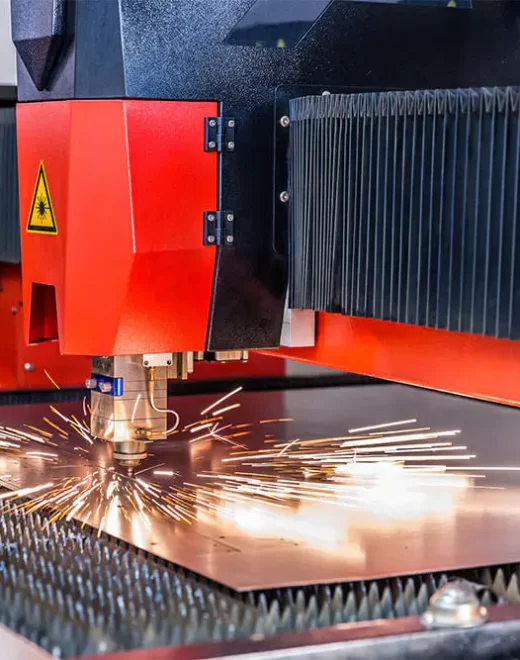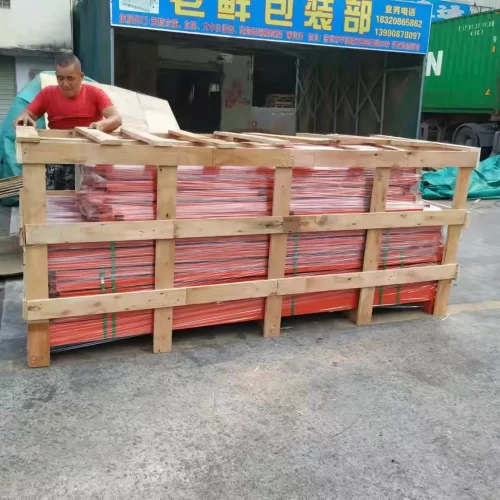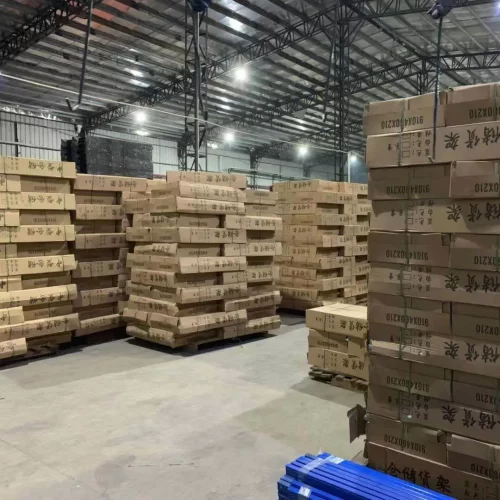WhatApp: +86 13713386306
Email: nancy@chinastoragerack.com
Phone: +86 18578478231
WeChat: +86 18578478231
Radio shuttle rack was assembled by rack, radio pallet shuttle, and radio-controlled, forklift for high-density storage equipment. The pathway under the Radio shuttle pallet can be operated with pallets, this kind of rack system with large storage, convenience store, the cargo can be first in and first out, first in and after out, for safety and efficiency.
| L*D*H (mm) | customizable |
|---|---|
| Layer | 3Layer, 4Layer, 5Layer, Customizable |
| Load Capacity | 1000kg, 2000kg, 500kg, Customizable |
| Color | Blue, Orange, Customizable |
| Weight | Customizable |
| Volume | Customizable |
| MOQ | 10 sets |
| Estimated Delivery Time | 15-25 days |
Radio shuttle racking system is a warehouse automation storage equipment consisting of racks and pallet shuttles. The radio shuttle racking system is a semi-automated storage rack, and the ability to automate access to goods is the most important feature of this rack. This type of racking consists of three divisions: racking, battery-driven pallet shuttle, and forklift. It can be adapted to the dimensions of the warehouse. Take advantage of the longitudinal stacking of the shuttle radio racking system, one end is designed as the inbound rack, the other end outbound rack, that is, goods first in first out, so that the pallet in the outbound, can significantly reduce the driving distance of the forklift, to further improve the efficiency of the goods in and out of the warehouse; stored goods can be based on different batches, categories, to achieve the orderly storage of large quantities, convenient warehouse management. Shuttle radio racking uses pallet shuttle to store goods, so it no longer needs too many employees to operate, which can save a lot of labor costs. Learn more about the advantages of shuttle racking.
Shuttle racking is suitable for muckle and fewer variety products, such as food, drinks, chemical and cigarettes, etc these kinds of large quantities and single type products. It is a better warehouse storage solution for warehouse owners who want to automate their storage.

Punches run the length of the hanging plate at standard intervals where the cross beams are connected, most of them are 50mm or 75mm pitch.
Steel coil through the rolling equipment to form the upright and beam, beam usually have P beam and interlock beam, upright usually have diamond hole and teardrop hole.
Through welding, the hanging plate and beam; upright and footplate are closely connected together, which effectively strengthens the stability of the rack structure.
Polish the product after welding, then use electrostatic powder spraying technology on the surface, and finally use the high-temperature baking process to ensure a smooth surface.
Finally came to the last step. After the production of the product is completed, we usually package the exported goods to avoid long-distance transportation damage and seawater erosion during shipping.




Radio shuttle racking system is also very different from other ordinary racks in that it can be designed according to demand in terms of storage mode. For traditional pallet racking, a rack is usually suitable for only one storage mode, but pallet shuttle racking can choose FIFO or LIFO working mode according to the product characteristics, which also has great convenience.
Radio shuttle racking systems are more accurate and less prone to errors than ordinary manual storage because the goods are stored automatically by pallet shuttle. It is also much more efficient than traditional racking, which means that shuttle radio racking system can bring greater benefits to companies. The radio shuttle racking system is also very adaptable and can adapt to the storage needs of most products on the market today, making it a very versatile storage rack.
1. Realize dense storage of pallet goods, significantly reduce the cost of warehouse construction.
2. The goods can be chosen freely first in or first out.
3. Realize radio shuttle racking system without driving in and taking out of the goods.
4. Anti-security performance is much higher than drive in racking.
1. Pallet storage.
2. Each aisle stores the same kind of goods.
3. Racking height is limited by forklift operation height.
4. In and out of goods at both ends or one end (first out or last out).
5. Suitable for cold storage.
The difference between the two types of racking in terms of storage turnover rate. Drive in racking has better cargo throughput than general storage racking, for example, due to its continuous drive in. However, drive in racking is still mainly manually operated. Shuttle radio racking, on the other hand, is more efficient than drive in racking because it is all automated and faster than drive in racking, both in terms of stocking and picking up. Therefore, the cargo turnover rate and overall operation efficiency of radio shuttle racking system are different from those of drive in racking system.
The return on investment of shuttle radio racking is higher than that of drive in racks. Although in the early stage, shuttle radio racking investment costs are higher than the general racking including drive in racking, in the process of use, especially as time advances, its operational efficiency and low maintenance costs will be clearly demonstrated. For those who pursue long-term benefits, radio shuttle racking is a relatively good choice.
Stocking: The goods are placed at the forefront of the racking aisle rail by forklift, and the pallet shuttle, operated by radio remote control, can carry the pallet goods on the rail;
Pick-up: The pallet shuttles move the pallets from the depths of the racks to the front end of the racks, and the pallets are removed from the racks by a forklift;
Move pallet shuttle: the pallet shuttle can be placed in different aisles by forklift, and several aisles can share a pallet shuttle. The number of pallet shuttles is determined by the depth of the aisle, the total amount of goods, the volume of shipments, the frequency of shipments and other comprehensive factors; this warehouse solution consists of a certain number of groups of racks with pallet shuttles, transportation and storage system. The space utilization rate of more than 80%!
Shuttle radio racking is certainly not the cheapest storage system, and it can even be more expensive than typical pallet racking, but it is a great option if you want to maximize the capacity of your warehouse.
In a shuttle radio racking system, pallets are moved within the racking by pallet shuttles, a truck that runs on a track underneath the beam where the pallets are located. A normal manual forklift truck places the shuttle on the racking at the desired height and pallet position, then the load is placed on the pallet shuttles, which can then move further into the racking to the desired position where it is lowered from the pallet and returned to the end of the racking to be moved to another location. This operating system means that radio shuttle racking system allows for very high storage densities – in operations using shuttle radio racking, the racks are typically four or five pallets deep or more. As with other dense storage systems, radio shuttle racking system reduces selectivity – in other words, it can mean that it takes longer to get to the pallet you want, especially if it is in the center of a dense rack surrounded by other pallets. However, since the robotic shuttle is responsible for actually placing the pallets, manual trucks have less handling time, which means greater operator efficiency.
Potential selectivity issues mean that shuttle radio racking is often used in “First In First Out” (FIFO) systems, where pallets are placed from one side of the rack and removed from the other, or “Last In First Out” (LIFO) systems, where pallets are placed and removed from the same side of the rack. removed from the same side of the rack.
For a food and beverage company like Coca-Cola, the radio shuttle racking system is a perfect solution. When the company recently decided to build a new high warehouse, shuttle radio racking was the obvious choice to maximize available space and keep operator efficiency as high as possible.
1. Forklift lift height and available net height of the warehouse: the total height of the shuttle radio racking and effective storage units, the forklift lift height and the net height of the warehouse. The designer must know the maximum height of the forklift, elevator and the height of the customer’s warehouse available to the user.
2. Construction of the storage area: In-depth understanding of the various construction of the warehouse, including the location of the ceiling beams, fire hydrants, and important entrances and exits of the warehouse. This can design a reasonable reserved channel for the radio shuttle racking system to facilitate the entry of goods and personnel in the future.
3. Specific model and parameters of forklift: By knowing the model and parameters of forklift, you can know the depth and size of the forklift, so as to determine the specifications, total length, total width and total height of the unit storage rack.
4. Pallet and cargo info (pallet size and cargo size): The design of unit racks needs to consider the conditions of pallet and cargo, such as pallet size, weight, bottom structure, etc. And the size must take into account the weight of the goods. Measurements and estimates must be made before design.
5. the direction and requirements of the goods in and out of the warehouse: In fact, some people mentioned that the entry and exit of goods should be prepared for measurement. In fact, the scientific and reasonable shuttle radio racking design should also understand that the direction of the goods can be effectively designed layout so that the rack can be easily installed.
a. Increase capacity with radio shuttle racking system
By designing large, high-density racks with almost zero aisles, you can significantly increase the number of pallet positions in your system, such as APRs, push back racks and drive in racks.
b.Improved space utilization
One of the main advantages shuttle radio racking offers is the ability to improve space utilization. This is achieved through a thorough understanding of the SKUs stored, their speed and the use of shuttle trucks to constantly move pallets to optimize capacity.
c. Reduced forklift travel time
Forklift travel distances are significantly reduced as the shuttle takes on most of the work of putting pallets into and taking pallets out of the racking system.
d.Faster loading times
The immediate benefit of reduced forklift travel time is that it can load pallets into the truck or system faster than other systems.
e.Increased loading per operator per day
Reduced forklift travel time and faster loading times also allow forklift operators to significantly increase the amount of pallets loaded per day. As a result, the solution may require fewer forklifts and operators that can be deployed elsewhere in the organization, resulting in significant savings in warehouse operating costs.
f. Reduced damage to racking
Unlike drive in racking, where forklifts must enter the racking system, the pallet shuttles method reduces the potential for contact with the racking structure and therefore greatly reduces the potential for damage. Damaged racking is not only costly and dangerous but can also create significant operational challenges for the warehouse. By reducing damage to racking, warehouses can become safer, more efficient and less costly to operate.
g. Reduce damage to stored products
The radio shuttle racking system solution reduces the potential for product damage in two ways. First, we reduce the manual handling element as the shuttle truck moves pallets and goods around the racks, thus reducing the possibility of collisions.
h. Improving warehouse security
Safety is a top priority in every warehouse. Reduced running time and the need for fewer forklifts will reduce the likelihood of accidents. Likewise, the possibility of damage to racks is reduced and the risk of collapse and potential safety problems is reduced.
i. Potential to reduce energy consumption and CO2 emissions
Depending on the design and layout of the shuttle radio racking system, especially for deeper racks, there may be an opportunity to reduce the amount of lighting in the warehouse by concentrating it in purely working areas. Combined with the reduction in the number of forklifts required, the radio shuttle racks should be able to provide ongoing energy savings.
Radio shuttle racking system also has its disadvantages, the biggest disadvantage of this rack is that the manufacturing cost is higher than the selective pallet racking, because the radio shuttle racking system needs to use the pallet shuttle to work, and the cost of the pallet shuttle is relatively high, which also raises the whole rack manufacturing costs. Therefore, many companies will feel the need to build this rack in the end, which requires companies to consider their own situation, you can consider whether to use the radio shuttle racking system according to the actual benefits later. In addition:
1. in order to ensure the stable operation of the pallet shuttle, the accuracy of the racks, rails and flooring has high requirements. The pallet shuttle is the core component of the system, its quality is directly related to the future user after-sales cost high and low. The system investment cost and maintenance cost is relatively high, need a professional and reliable service team responsible for maintenance.
2. Single storage items, not random goods access.
3. Pallet shuttle size is not standard, each company’s pallet shuttle can not be common.
4. Equipment failure, the rescue time is relatively long.
1. Increase storage capacity
Drive in racking is seen as an excellent high-density storage solution, but it has its limitations. As the name implies, drive in racking requires a forklift to enter the system to deliver and retrieve pallets. If you try to make the system too deep or too high, the time and effort required to carefully position the pallets can make efficient operation almost impractical.
The traditional approach is to limit drive in racking to approximately 4 pallets high and 7-10 pallets deep, which often sees a grid layout with forklift operating lanes.
With the radio shuttle racking system, the forklift never enters the system. The radio shuttle do all the work, taking the pallets from the front of the system to the next available location. This allows the system to be as deep and as high as your cube allows and avoids the need for operating aisles, thus maximizing the available space.
2. Avoid costly racking repairs
Driving a forklift into a racking system to automatically deliver and retrieve pallets increases the likelihood of column damage and causes the racking system to become a health and safety issue. As a rule of thumb, we estimate that approximately 5% of the columns may be damaged in a drive in racking system solution each year.
Replacing a damaged structure is only one element of the cost. The time and money involved in unloading goods in the bay and affected surrounding areas is often the largest cost, but is often overlooked in the overall cost analysis.
Compare this to the Radio Shuttle racking system solution where the forklift never enters the rack structure, significantly reducing the likelihood of rack damage and allowing any ongoing maintenance of the shuttle itself to be performed safely on the ground – often using a replacement shuttle to ensure operations continue without interruption.
3. Reduced running time
Running and loading time is one of the hidden costs of warehousing. Every forklift driver will say they drive as fast as possible, and asking forklift drivers to try to speed up may only lead to further damage to the racking. But when you consider that forklift drivers may have to enter the drive in system and carefully move 7 pallet space depths before retrieving a pallet from the fourth level, you understand why the travel time is so long.
This doesn’t even take into account the fact that they may have to drive through the middle of the warehouse to get into the bay in racking. The need to minimize the time trucks spend in docking areas has forced companies to invest further in forklifts and driver fleets, and changes to racking systems may actually result in significant long-term savings.
4. Increased utilization
Maximum available capacity is one thing, but only if you can use it.
One of the biggest problems with drive in racking is managing the available pallet locations in the daily movement of goods.
Once pallets are removed from the racking system, it can be difficult to replenish inventory, so many companies spend a lot of time, for example during the night shift, just moving pallets around within the drive in racking to maximize their utilization.
In the study we conducted, we estimated the average utilization of drive in racking to be 65-70%, but if this utilization requires significant man-hours to deliver, the hidden costs of forklift wages and fuel must be taken into account.
In contrast, a well-designed radio shuttle racking system solution can provide an average utilization of 80-85%.
5. Energy Savings
With every company becoming more environmentally conscious, coupled with government legislation and rising energy costs, more and more companies are looking at every opportunity to reduce their carbon let.
In addition to requiring fewer forklifts, radio shuttle racking solutions also require less lighting in the middle section of the racks due to reduced travel time and less consumption of electricity or LPG, with no operator or forklift access required.






Your email is absolutely secure and we’ll not disclose it to any third party for any reason.
Your email is absolutely secure and we’ll not disclose it to any third party for any reason.